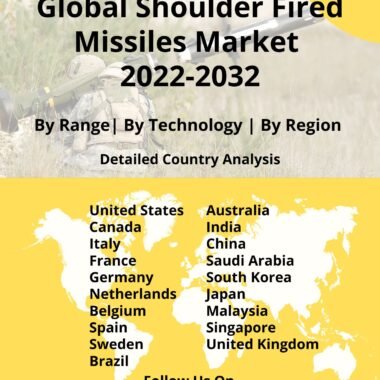Description
Small arms refer to any kind of weapon intended for private use, such as light machine guns, submachine guns, machine pistols, fully automatic rifles, assault rifles, or semi-automatic rifles. Small arms, in general, are weapons intended for individual use. They are mainly in the smaller caliber range (4.6–40 or 66 mm), Handguns (autoloading pistols and revolvers), and shoulder arms (rifles and carbines, submachine guns, and light machine guns, and grenade launchers) are examples of small arms.
Light weapons are those that are designed to be carried and used by two or three people as a crew. Heavy machine guns, hand-held under-barrel, mounted grenade launchers, portable antiaircraft, anti-tank guns, recoilless rifles, portable launchers of anti-tank missile and rocket systems, portable launchers of anti-aircraft missile systems, and mortars of less than 100 mm caliber are examples of light weapons.
Political unrest increased participation in shooting and hunting sports, and increased demand for law enforcement and self-defense are driving the arms market forward. The implementation of stringent rules governing the possession and acquisition of firearms, as well as the strict enforcement of anti-hunting laws, are impeding the market growth. Increasing anti-terrorism measures are expected to open up new market opportunities.
The rise of the small arms market is expected to be fueled by factors such as increasing cross-border disputes, rising wars, rising cases of terrorism, and increased civilian use. Several fights against terrorist organizations, particularly in the Asia-Pacific and Middle East regions, are pushing increased small arms procurement by law enforcement agencies and militaries.
The increased number of mass shootings in countries such as the United States, Australia, and other European countries has led to the imposition of strong government laws and regulations on the purchase of small guns. In some countries, the licensing process is so lengthy that it impedes the market growth.
3D printed firearms are becoming increasingly common in the headlines, drawing the attention of both manufacturers and policymakers throughout the world. 3D-printed firearms are guns made with a 3D printer, a filament of choice, FDM processes, and features similar to those found in real guns. It’s not a highly versatile gun, but it grabbed public curiosity in the prospects of 3D printing, a rapidly evolving technology that many were only starting to explore.
The global market is consolidated, with a limited number of small and medium-sized companies accounting for the majority of sales. Established companies are involved in a variety of research and development efforts and projects aimed at developing more efficient technology for the small arms market. The following are some of the market’s major players: Smith & Wesson (US), Sturm, Ruger & Co., Inc. (US), Israel Weapons Industry (IWI) (US), Heckler & Koch Gmbh (Germany), Kalashnikov Group (Russia), and Èeská Zbrojovka a.s. (Czech Republic).
India’s Defense Research and Development Organization (DRDO) has created the ASMI machine pistol, which is the country’s first indigenous machine handgun. The Advanced Towed Artillery Gun Systems (155 mm, 52 calibers) are currently being developed by the DRDO (ATAGS). New technologies are being developed to improve the performance of weapon platforms, automation and control systems, recoil management, and materials.




